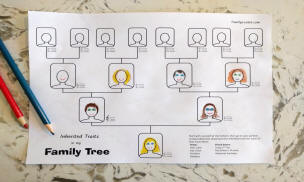Causes of Dyslexia
There are different causes of dyslexia. Some of them are explained below:
Genetic factors:Dyslexia is often passed down through genetics. Research has found that if one family member has dyslexia, other family members are more likely to have it too. Some genes, like DCDC2 and ROBO1, have been linked to dyslexia. These genes engage in the processes in the brain that help with reading and language.

According to the report by National Institutes of Health (NIH), children with affected parents have 40% to 60% risk of developing dyslexia. For more information, please go to website https://pmc.ncbi.nlm.nih.gov/articles/PMC2597981/
Environmental factors: The factors such as lack of a language-rich environment, where children are not exposed to spoken and written language, can increase the chances of dyslexia. Moreover, a lack of exposure to books, reading, and conversation increases the risk. Overall, the environment a child grows up plays a key role in shaping their ability to read.
.jpeg)
Neurological factors: Studies have shown that people with dyslexia process information more slowly in the left side of the brain, which controls language skills like reading, listening, and speaking. Many key areas of the brain are responsible for tasks like breaking down sounds in words. In people with dyslexia, some areas of the brain may not work the same way, making it difficult for them to read.
.png)